The dark side of Vienna: Five sinister spots in the Austrian capital
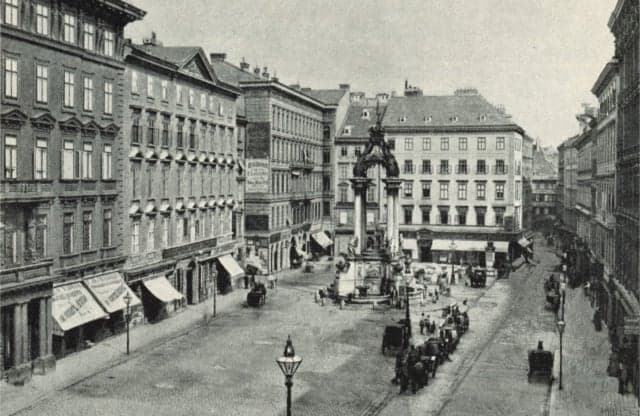
Had enough sachertorte, waltzes and churches? Looking for a darker, less salubrious side of Vienna? We've got you. In the first of a series, historian and travel fiend Mike Stuchbery, introduces you to some of the city's horrible history and sorrowful spots…
Blood-curdling: Ungarisches Haus
Augustinerstraße 12, 1st District
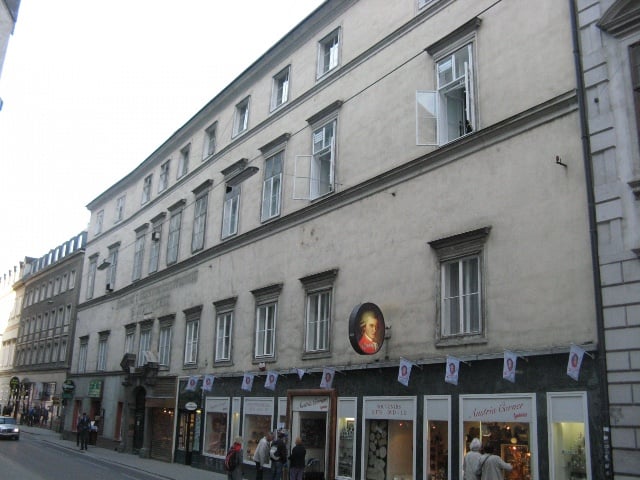 Photo: Wikicommons/Buchhandler
Photo: Wikicommons/Buchhandler
While the legend of the infamous 'Blood Countess’, Elizabeth Bathory, is more associated with Hungary and Slovakia, she does have a small cameo in Vienna's story.
When not off torturing the help at Cachtice Castle in modern Slovakia, the infamous sadist - and yes, she most certainly was one - had a townhouse, the 'Hungarian House’,near the centre of the city. At the dawn of the 16th century, she spent a considerable amount of time there, as she managed her absent husband's affairs.
Just because she was living in the big city, that didn't mean that she necessarily behaved herself. Legends tell the monks in the Augustinian monastery across the street hurled pots at the house, trying to get the screaming from servant girls to stop.
Whether or not there's any truth to the stories is hard to say - there was a lot of propaganda produced around Bathory, who was a Protestant, by Catholic forces. What is clear, however is there was significant mistreatment of servants, as preserved legal records show
As for the place itself, the townhouse facade was renovated in the 18th and 19th centuries. However, if you're convinced that the evil that men do lives beyond death, look for number 12 opposite the Augustinerkirche and soak in the absolute depravity.
Up In Flames: Haus zum Grossen Jordan
Judenplatz 2, 1st District
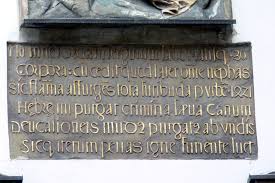 Photo: Wikicommons/ Wolfgang Sauber
Photo: Wikicommons/ Wolfgang Sauber
Vienna's Jewish community is an integral, vital part of what makes the city what it is. Unfortunately, it has also been subject to persecution a number of times over the last 800 years.
Hundreds of years of years prior to the Holocaust, in 1421, Vienna's Jews were targeted by Duke Albrecht V. A raging anti-semite, he was convinced they aided and abetted his enemies, withholding the wealth that sustained his military campaigns.
Ordering forcible conversions, his troops (and quite a lot of citizens) descended upon the area around Judenplatz in March 1421, laying siege. The community lasted three days, before the Rabbi of the synagogue burned it down with many inside, hoping to spare them . The few survivors were led outside the city walls and burned at the stake.
In the aftermath of the pogrom, the former Jewish quarter was divided up amongst those leading the persecutions. A plaque appeared on the 'Haus zum Grossen Jordan’, showing the persecutions and cruelly reading:
‘As the waters of the River Jordan cleansed the souls of the baptized, so did the flames which rose up in the year 1421 rid the city of all injustice’
Debate has raged for years as go whether the plaque should be taken down. Personally, I feel that it should remain and viewed in conjunction with the nearby, striking Holocaust memorial, and award-winning Jewish Museum. Viewed together, they tell an important story about the cycles of hatred that challenge us - and the resilience of the local Jewish community.
Pestilence: Elisabethstrasse
Elisabethstrasse, 1st District
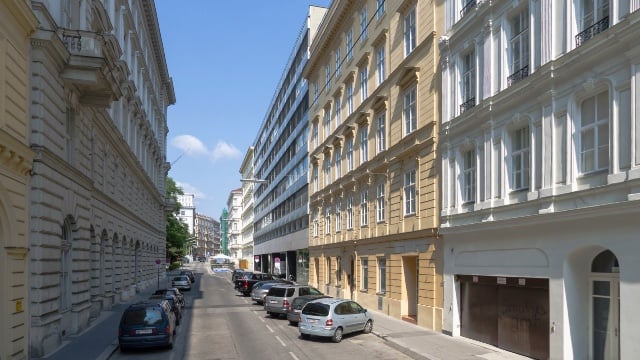 Photo: Wikicommons/Peter Gugerell
Photo: Wikicommons/Peter Gugerell
Vienna is well known for its cemeteries. It’s even better known for its culture of death - however, all in good order, and all in good time. Plague and pestilence was one of the most feared disasters that could strike the medieval city, and despite the best efforts of the city fathers, it struck a number of times, encouraged by filthy and damp conditions.
Perhaps the most severe outbreak, of course, was during the Black Death, around 1349. Faced with a great deal of sick and dead that needed to be disposed of, a space was allocated outside the city walls for their care and burial. It needed to a large one - some suggest that up to two-thirds of the city’s population died.
Hundreds of years later, when the city expanded outside the medieval city’s footprint, workmen laying the foundations of roads and buildings on today's Elisabethstrasse, to their surprise, found a great deal of skeletons.
They had stumbled across what had once been a large plague cemetery, alongside a hospital for the sick. In the chaos of previous centuries, the city’s plague dead had been completely forgotten. When the Turks invaded in 1529, the hospital had been destroyed and the city ramparts that rose afterward covered the area until the 19th century. As is the case with many European cities, the dead slipped between the cracks.
Today there’s nothing to suggest that this was the site of so much woe - it’s a rather lovely street on the cusp of the Innere Stadt. However, come here at dusk and you just might just catch the shade of a long-dead Viennese burgher, bemused at the pomp and glamour that has covered his resting place!
Theresia's Sad Tale: Hoher Markt
Hoher Markt 1, 1st District
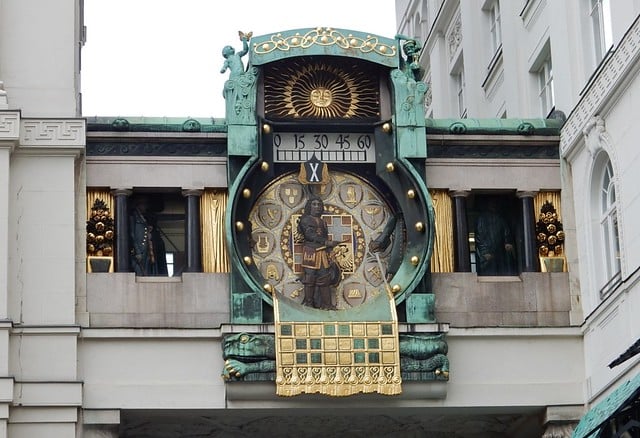 (Anker clock, Hoher Markt. Photo: Wikicommons/Thomas Ledl)
(Anker clock, Hoher Markt. Photo: Wikicommons/Thomas Ledl)
Not too far from where the fountain stands in the city’s former marketplace, also once stood one of the city’s execution spots. It was here in March 3, 1809, that hundreds of troops stood guard as Theresia Kandl mounted the steps towards the hangman’s noose.
Theresia’s crime? These days, we’d say she was a battered woman, the victim of cruel physical and verbal punishment at the hands of a violent and uncaring husband.
After one beating too many, young Theresia took an axe on one snowy night and gave her husband, drunk in a stupor, ten awful blows, killing him on the spot.
Panicking, she stripped her husband and placed the mangled corpse in a basket, walking through snowy streets to dump him somewhere in the 4th District. Unfortunately she was spotted by a local baker and after considerable questioning, she confessed, having been presented with bloody clothes.
Of course, the idea of a slight, attractive woman (she was very pretty) murdering her much larger husband caused an uproar - it was seen to upset the natural order of things People flocked to see her as she was held in the pillory, in the lead up to her execution, and murder ballads were written and sung on every street corner, so that everyone knew her name.
Even after her execution, the name Theresia Kandl was spoken of for many years. In fact, something strange happened. Near where she grew up, the Kandlkapelle was built, in her honour. Rather than a vile murderess, she somehow transmogrified into a tragic figure, simply trying to defend herself.
One might suggest that in the age of #MeToo, the story of Theresia has special significance, as we address the exploitation and abuse that is all to prevalent in any number of areas. Whether this is true or not, it can’t be denied that the place has a slight air of melancholy.
Assassination: Bundeskanzleramt
Ballhausplatz 2, 1st District
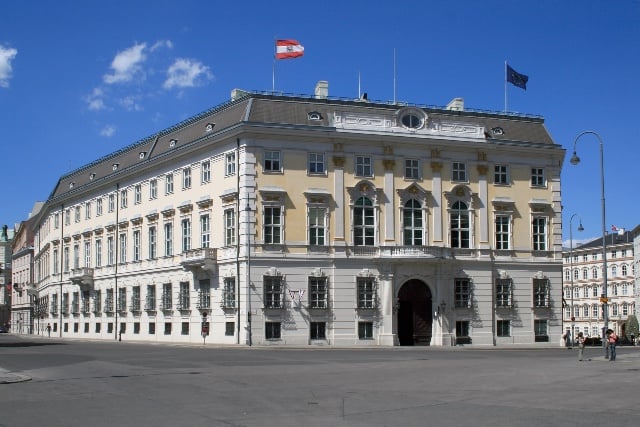 Photo: Bundeskanzleramt. Wikicommons/Manfred Werner
Photo: Bundeskanzleramt. Wikicommons/Manfred Werner
Vienna's dark history stretches right up to the 20th century. Yet even before the horrors of the Nazi regime, Vienna was a turbulent, violent place - especially during the interwar period.
Engelbert Dolfuss, as Federal Chancellor in the early thirties, attempted to mend the political divisions that had torn the country apart during the Austrian Civil War. Unfortunately, his solution to this was 'Austrofascism’, an end to democracy and the rule of a single party.
This still wasn't enough for the National Socialists, or Nazis, however. Inspired by their German cousins, they sought to take control of the country in a coup an enact the policies already being rolled out across the border.
On the 25th of July, 1934, ten Nazis entered the Bundeskanzleramt, attempting to overthrow the regime. Coming across Dolfuss and his entourage as they attempted to flee, the chancellor was shot, dying a couple of hours later.
While the Nazi coup failed shortly after the death of Dolfuss, only four years later the country was annexed and became part of the Nazi state until 1945.
Today there's no indication at the federal chancellery that this is where Dolfuss was killed - after all, memorials to fascists aren't too popular these days. However, ask about and you might be able to find someone to point out where the dark deed occurred.
Enjoy this guide to the inner city's dark spots? Let us know and we'll be back with more dark Viennese surprises!
Comments
See Also
Blood-curdling: Ungarisches Haus
Augustinerstraße 12, 1st District
 Photo: Wikicommons/Buchhandler
Photo: Wikicommons/Buchhandler
While the legend of the infamous 'Blood Countess’, Elizabeth Bathory, is more associated with Hungary and Slovakia, she does have a small cameo in Vienna's story.
When not off torturing the help at Cachtice Castle in modern Slovakia, the infamous sadist - and yes, she most certainly was one - had a townhouse, the 'Hungarian House’,near the centre of the city. At the dawn of the 16th century, she spent a considerable amount of time there, as she managed her absent husband's affairs.
Just because she was living in the big city, that didn't mean that she necessarily behaved herself. Legends tell the monks in the Augustinian monastery across the street hurled pots at the house, trying to get the screaming from servant girls to stop.
Whether or not there's any truth to the stories is hard to say - there was a lot of propaganda produced around Bathory, who was a Protestant, by Catholic forces. What is clear, however is there was significant mistreatment of servants, as preserved legal records show
As for the place itself, the townhouse facade was renovated in the 18th and 19th centuries. However, if you're convinced that the evil that men do lives beyond death, look for number 12 opposite the Augustinerkirche and soak in the absolute depravity.
Up In Flames: Haus zum Grossen Jordan
Judenplatz 2, 1st District
 Photo: Wikicommons/ Wolfgang Sauber
Photo: Wikicommons/ Wolfgang Sauber
Vienna's Jewish community is an integral, vital part of what makes the city what it is. Unfortunately, it has also been subject to persecution a number of times over the last 800 years.
Hundreds of years of years prior to the Holocaust, in 1421, Vienna's Jews were targeted by Duke Albrecht V. A raging anti-semite, he was convinced they aided and abetted his enemies, withholding the wealth that sustained his military campaigns.
Ordering forcible conversions, his troops (and quite a lot of citizens) descended upon the area around Judenplatz in March 1421, laying siege. The community lasted three days, before the Rabbi of the synagogue burned it down with many inside, hoping to spare them . The few survivors were led outside the city walls and burned at the stake.
In the aftermath of the pogrom, the former Jewish quarter was divided up amongst those leading the persecutions. A plaque appeared on the 'Haus zum Grossen Jordan’, showing the persecutions and cruelly reading:
‘As the waters of the River Jordan cleansed the souls of the baptized, so did the flames which rose up in the year 1421 rid the city of all injustice’
Debate has raged for years as go whether the plaque should be taken down. Personally, I feel that it should remain and viewed in conjunction with the nearby, striking Holocaust memorial, and award-winning Jewish Museum. Viewed together, they tell an important story about the cycles of hatred that challenge us - and the resilience of the local Jewish community.
Pestilence: Elisabethstrasse
Elisabethstrasse, 1st District
 Photo: Wikicommons/Peter Gugerell
Photo: Wikicommons/Peter Gugerell
Vienna is well known for its cemeteries. It’s even better known for its culture of death - however, all in good order, and all in good time. Plague and pestilence was one of the most feared disasters that could strike the medieval city, and despite the best efforts of the city fathers, it struck a number of times, encouraged by filthy and damp conditions.
Perhaps the most severe outbreak, of course, was during the Black Death, around 1349. Faced with a great deal of sick and dead that needed to be disposed of, a space was allocated outside the city walls for their care and burial. It needed to a large one - some suggest that up to two-thirds of the city’s population died.
Hundreds of years later, when the city expanded outside the medieval city’s footprint, workmen laying the foundations of roads and buildings on today's Elisabethstrasse, to their surprise, found a great deal of skeletons.
They had stumbled across what had once been a large plague cemetery, alongside a hospital for the sick. In the chaos of previous centuries, the city’s plague dead had been completely forgotten. When the Turks invaded in 1529, the hospital had been destroyed and the city ramparts that rose afterward covered the area until the 19th century. As is the case with many European cities, the dead slipped between the cracks.
Today there’s nothing to suggest that this was the site of so much woe - it’s a rather lovely street on the cusp of the Innere Stadt. However, come here at dusk and you just might just catch the shade of a long-dead Viennese burgher, bemused at the pomp and glamour that has covered his resting place!
Theresia's Sad Tale: Hoher Markt
Hoher Markt 1, 1st District
 (Anker clock, Hoher Markt. Photo: Wikicommons/Thomas Ledl)
(Anker clock, Hoher Markt. Photo: Wikicommons/Thomas Ledl)
Not too far from where the fountain stands in the city’s former marketplace, also once stood one of the city’s execution spots. It was here in March 3, 1809, that hundreds of troops stood guard as Theresia Kandl mounted the steps towards the hangman’s noose.
Theresia’s crime? These days, we’d say she was a battered woman, the victim of cruel physical and verbal punishment at the hands of a violent and uncaring husband.
After one beating too many, young Theresia took an axe on one snowy night and gave her husband, drunk in a stupor, ten awful blows, killing him on the spot.
Panicking, she stripped her husband and placed the mangled corpse in a basket, walking through snowy streets to dump him somewhere in the 4th District. Unfortunately she was spotted by a local baker and after considerable questioning, she confessed, having been presented with bloody clothes.
Of course, the idea of a slight, attractive woman (she was very pretty) murdering her much larger husband caused an uproar - it was seen to upset the natural order of things People flocked to see her as she was held in the pillory, in the lead up to her execution, and murder ballads were written and sung on every street corner, so that everyone knew her name.
Even after her execution, the name Theresia Kandl was spoken of for many years. In fact, something strange happened. Near where she grew up, the Kandlkapelle was built, in her honour. Rather than a vile murderess, she somehow transmogrified into a tragic figure, simply trying to defend herself.
One might suggest that in the age of #MeToo, the story of Theresia has special significance, as we address the exploitation and abuse that is all to prevalent in any number of areas. Whether this is true or not, it can’t be denied that the place has a slight air of melancholy.
Assassination: Bundeskanzleramt
Ballhausplatz 2, 1st District
 Photo: Bundeskanzleramt. Wikicommons/Manfred Werner
Photo: Bundeskanzleramt. Wikicommons/Manfred Werner
Vienna's dark history stretches right up to the 20th century. Yet even before the horrors of the Nazi regime, Vienna was a turbulent, violent place - especially during the interwar period.
Engelbert Dolfuss, as Federal Chancellor in the early thirties, attempted to mend the political divisions that had torn the country apart during the Austrian Civil War. Unfortunately, his solution to this was 'Austrofascism’, an end to democracy and the rule of a single party.
This still wasn't enough for the National Socialists, or Nazis, however. Inspired by their German cousins, they sought to take control of the country in a coup an enact the policies already being rolled out across the border.
On the 25th of July, 1934, ten Nazis entered the Bundeskanzleramt, attempting to overthrow the regime. Coming across Dolfuss and his entourage as they attempted to flee, the chancellor was shot, dying a couple of hours later.
While the Nazi coup failed shortly after the death of Dolfuss, only four years later the country was annexed and became part of the Nazi state until 1945.
Today there's no indication at the federal chancellery that this is where Dolfuss was killed - after all, memorials to fascists aren't too popular these days. However, ask about and you might be able to find someone to point out where the dark deed occurred.
Enjoy this guide to the inner city's dark spots? Let us know and we'll be back with more dark Viennese surprises!
Join the conversation in our comments section below. Share your own views and experience and if you have a question or suggestion for our journalists then email us at [email protected].
Please keep comments civil, constructive and on topic – and make sure to read our terms of use before getting involved.
Please log in here to leave a comment.